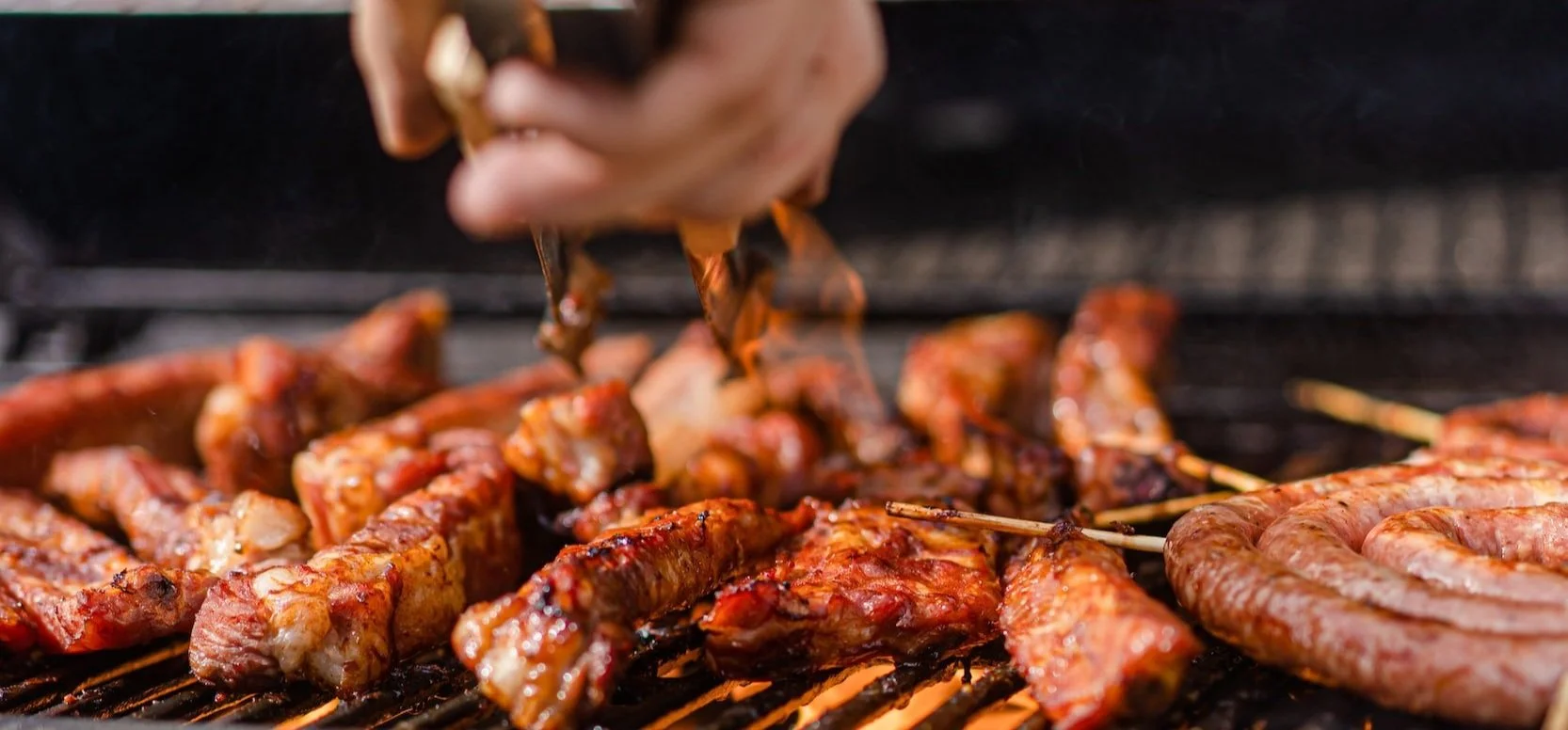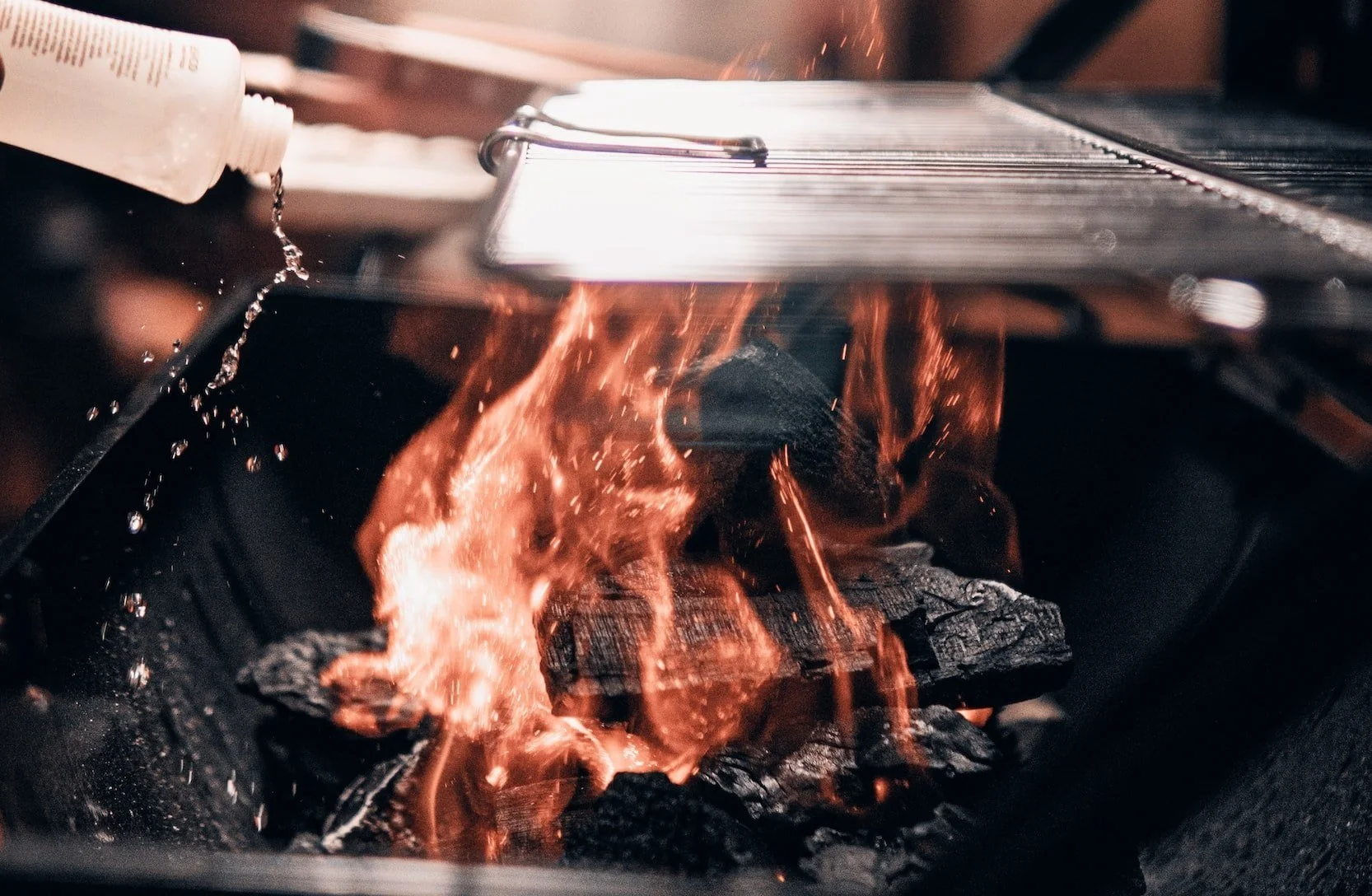“Don't Call It BBQ!” – Grilling Vs BBQ
Discover > Texas Home Cooking > “Don't Call It BBQ!” – Grilling Vs BBQ
Thea Texas summer is well and truly knocking on our doors. So, what does this mean?
Traditionally, this means families across the Lone Star State are heading out to their yards to do some serious grilling or barbecuing. But wait, aren’t grilling and barbecuing the same thing? Well, not really. Though these two terms are often used interchangeably, they are actually two very different cooking methods.
Differences Between Grilling and BBQ
Grilling refers to the process of cooking food directly over a hot flame – something we often do during the summer months. This type of cooking is done hot and fast, with the flames reaching temperatures of 500–550℉ or higher! Foods that are perfect for grilling include steaks, pork chops, (What wine goes well with pork chops?) hamburgers, fish and seafood, hotdogs, and corn.
Barbecuing, on the other hand, is a cooking process that involves much lower temperatures and a longer period time (many, many hours). We’re talking temperatures of around 225℉ – less than half as hot as those required for grilling! This cooking method is often used for tough meats like ribs, briskets, pork shoulder, whole chicken, or turkey. This kind of meat needs low and slow heat for it to become succulent and tender. Unlike grilling, which uses direct heat, barbecuing involves a heat source being connected to the chamber that holds the meat. The process is often called “smoking” and uses wood or charcoal.
Barbecue (What wine goes well with barbecue?) food is a beloved and popular cuisine that has its roots in the Southern United States. The key to great barbecue is a good barbecue sauce and a cooking technique known as low and slow cooking. This cooking method involves cooking the meat over low heat for a long period of time, typically several hours. The slow cooking time allows the flavors of the barbecue sauce to penetrate deeply into the meat, resulting in a rich, tender, and juicy flavor
Cooking time is a crucial factor in determining the success of barbecued food. On a gas grill, food can be cooked quickly over intense heat using direct heat, while a charcoal grill requires more time and attention as it involves arranging the coals to regulate the heat.
The Basics of Grilling
1. First step – clean your grill.
Aside from doing it for food safety and hygiene reasons, a clean grill also prevents any meats you cook from sticking.
2. Give yourself time to prepare.
The process starts when you put the marinade on your meats and prepare the sauces. You can do this while you heat up the grill to the desired temperature.
3. Keep an eye on the grill.
I’m sure you don’t want your pet dog sneaking up and snatching a prime cut of grass-fed steak off the grate. And even worse than a hungry dog is a curious toddler wandering near a hot grill. Even if no kids or pets are present, you should monitor things closely, as overcooked or charred meat cannot be reversed.
4. Control flare-ups.
Don’t use a water spray as this will make the fire worse. Flare-ups are caused by fat leaking on the flames, thus excess fat and too much heat is a perfect recipe for them. When flipping the meat, move the piece to an emptier part of the grill. And if you fancy, before grilling, you can trim off any extra fat from the meat.
5. Oil the food, not the grill.
You’ll just be wasting oil if you apply it to the grill.
6. Flavor your meat.
Marinate and add spice to whatever you’re grilling. Do this at least an hour before cooking so that the flavors can sink into the meat.
7. Grill using the correct tools.
Essential tools include some tongs, a grill fork, a spatula, and heat-resistant gloves. Other useful tools include serving trays, a meat thermometer, a grill brush, knives, and a grilling pan for fish and seafood.
8. Use clean plates and utensils when you handle raw meat.
9. Grill away from flammable liquids.
Keep your distance from any flammable fluids, plants, your fence, car, and (of course) your house.
10. Keep an eye on when the food is ready.
Determining when your grilled food is ready to eat will depend on your experience. Looking for browning on the meat’s surface will naturally be a factor. But if you’re a newbie and want to be sure, use a thermometer.
11. Always clean your grill.
After grilling, clean up any residues such as ashes, meat juice, and sauces.
Top Tips for Grilling
* If you don’t have a thermometer, you can determine grilling temperature by using your hands. Carefully place your hand over the grate and start counting the seconds until you can no longer tolerate the heat.
Five seconds – low heat
Four seconds – medium heat
Three seconds – medium-high heat
Two seconds – moderate heat
One second – very high heat
You can use this method with charcoal and gas grills
Remember to use the space of the grate by moving the food across it. Concentrating your meats on one portion of the grate will lead to flare-ups.
Gas grilling is easy, but what if you’re using charcoal? Here are some specific tips:
1. Light the charcoal. Once the flame is sustained, spread it to build your grill fire.
2. Charcoal will need 10 to 15 minutes to reach the correct temperature for grilling.
3. You’ll know that your charcoal is ready for grilling when it has white or grayish ash coating it.
4. For a medium fire, light a single layer of charcoal and spread it over the grate.
5. For hot fire, light a double layer of charcoal and spread it over the grate.
Grilled meat is a staple of outdoor cooking, and the key to great grilled food is a hot grill grate and the use of very few ingredients. The cooking temperature is critical in achieving the desired results, as too high a heat can result in burnt meat, while too low a heat will not produce the desirable grill marks. These marks are the hallmark of perfectly grilled food, especially meat, which are achieved by placing the meat directly over the heat source.
Outdoor cooking is a popular pastime that allows people to enjoy good food and the great outdoors at the same time. One of the defining features of outdoor cooking is the smoky flavor that can be imparted to the food, giving it a unique taste that can't be replicated indoors. Beef brisket, (What wine goes well with beef brisket?) pork butt, chicken breasts, and hot dogs are all popular choices for outdoor cooking. These cuts of meat can be grilled, smoked, or roasted over an open flame to produce a delicious meal that is packed with flavor
After Grilling, Think About Safety
Never put the hot charcoal into the trash – it could start a fire. According to the National Fire Protection Association, from 2014 to 2018, grilling and barbecuing were responsible for approximately 10,600 house fires per year in the United States.
Always remember that coals can stay hot for 24 hours. After use, properly extinguish them and put them in a fireproof place.





